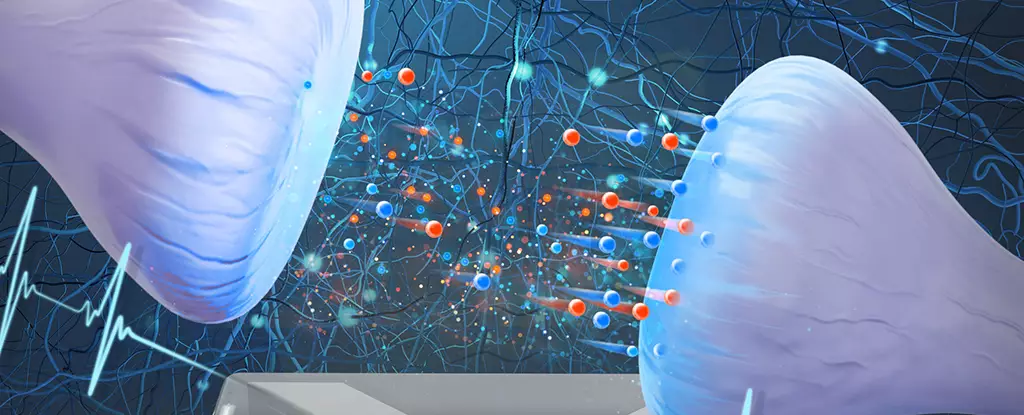In a groundbreaking development, researchers have successfully simulated neurological junctions known as synapses using a combination of water and salt, mirroring the composition of the brain. This advancement is a key component of the emerging field of iontronics, which merges biology with electronics to replicate the complex functions of the human brain.
The inspiration behind this innovative approach stems from the intricate workings of the human brain, which relies on the movement of charged particles called ions dissolved in water to transmit signals between neurons. The brain’s ability to process information is largely attributed to synaptic plasticity, which enables neurons to adjust the strength of connections in response to various stimuli.
Dubbed as iontronic memristors, these devices have the capability to ‘remember’ the amount of electrical charge that has passed through them previously, paving the way for the creation of artificial systems that can emulate the remarkable capabilities of the human brain. The iontronic memristor, resembling a cone filled with a water and salt solution, measures a mere 150 by 200 micrometers in size.
As electrical impulses prompt ions to travel through the channel within the cone-shaped device, variations in the electrical charge result in corresponding changes in ion movement. This alteration in the conductivity of the synapse can be quantified and interpreted to discern the nature of the input signal, essentially functioning as a form of memory storage. Moreover, researchers speculate that manipulating the length of the channel may influence the duration of memory retention, offering bespoke solutions for distinct tasks, similar to the brain’s adaptability.
Although in the nascent stages of development, iontronic memristors hold immense promise for a myriad of potential applications. The relative ease and cost-effectiveness of producing these devices suggest scalability for future endeavors. By leveraging water and salt as the base materials, researchers aim to replicate the neuronal processes of the brain in a more organic and efficient manner, propelling us closer to achieving computer systems with capabilities akin to the human brain.
This remarkable achievement illustrates the synergy between theoretical and experimental physics in pushing the boundaries of scientific innovation. The successful creation of artificial synapses using iontronic memristors represents a significant milestone in the field, prompting a sense of awe among researchers. By meticulously following the blueprint provided by the brain’s biological processes, researchers aspire to enhance the capacity and efficiency of computational systems.
The advent of iontronic memristors marks a pivotal moment in the quest to replicate the intricate functions of the human brain. As researchers delve deeper into the realm of iontronics, the possibilities for revolutionary applications and advancements in artificial intelligence are seemingly endless. With a harmonious blend of biology and electronics, the future of mimicking human brain synapses through iontronic devices appears increasingly promising.


Leave a Reply